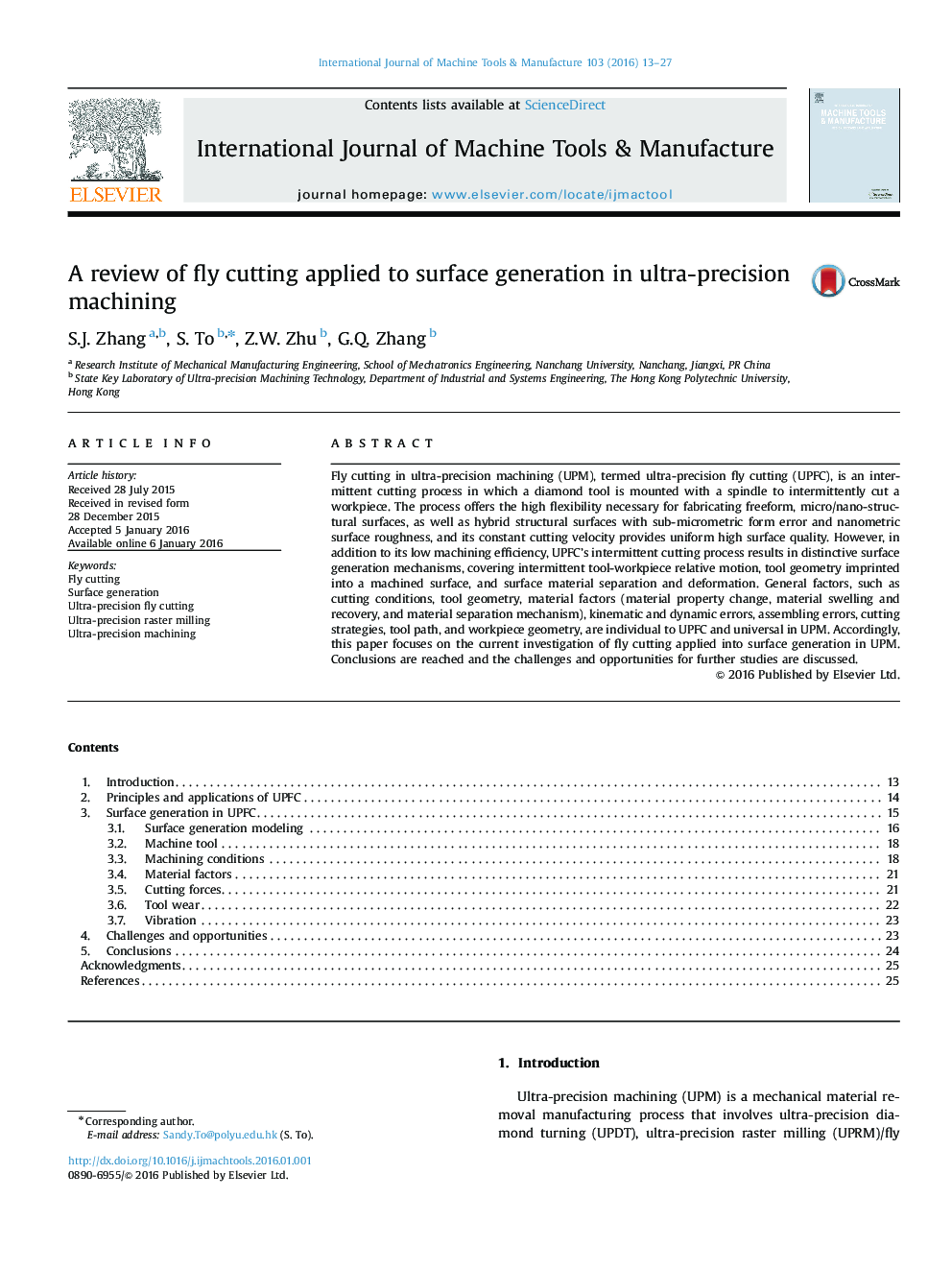| کد مقاله | کد نشریه | سال انتشار | مقاله انگلیسی | نسخه تمام متن |
|---|---|---|---|---|
| 778752 | 1464490 | 2016 | 15 صفحه PDF | دانلود رایگان |
• Fly cutting in UPM, i.e. UPFC, applied into surface generation is surveyed.
• UPFC causes distinctive surface generation mechanism.
• It is highly flexible to fabricate the special structural surfaces.
• The key issues in UPFC are drawn.
• The challenges and opportunities with some speculations are proposed.
Fly cutting in ultra-precision machining (UPM), termed ultra-precision fly cutting (UPFC), is an intermittent cutting process in which a diamond tool is mounted with a spindle to intermittently cut a workpiece. The process offers the high flexibility necessary for fabricating freeform, micro/nano-structural surfaces, as well as hybrid structural surfaces with sub-micrometric form error and nanometric surface roughness, and its constant cutting velocity provides uniform high surface quality. However, in addition to its low machining efficiency, UPFC’s intermittent cutting process results in distinctive surface generation mechanisms, covering intermittent tool-workpiece relative motion, tool geometry imprinted into a machined surface, and surface material separation and deformation. General factors, such as cutting conditions, tool geometry, material factors (material property change, material swelling and recovery, and material separation mechanism), kinematic and dynamic errors, assembling errors, cutting strategies, tool path, and workpiece geometry, are individual to UPFC and universal in UPM. Accordingly, this paper focuses on the current investigation of fly cutting applied into surface generation in UPM. Conclusions are reached and the challenges and opportunities for further studies are discussed.
Figure optionsDownload as PowerPoint slide
Journal: International Journal of Machine Tools and Manufacture - Volume 103, April 2016, Pages 13–27
